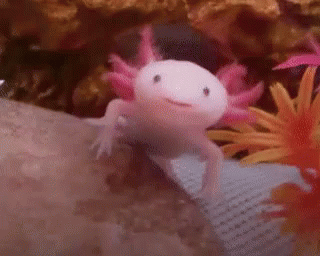Axolotls are fascinating!
I've always loved weird,
fascinating and cute animals, and that's why today I will write about one of my
favorite animals in the world: the axolotl.
Axolotls, also known as "Mexican
salamanders," are amphibians whose natural habitat are the murky canals of
Mexico City and nearby lakes, like Lake Xochimilco. They live most of their life’s
underwater even when they're adults and don't go through a metamorphosis, which
makes them different from other amphibians. Their diet consists in mostly small
insects, worms and fish.
They can regenerate the entirety of
lost appendages and sometimes more vital structures like vital organs. For this
reason, they've been used as testing animals in laboratories all over the world
to study the development of cancer and organ regeneration.
In the last decade they've also
became a popular exotic pet. I would love to have one but the amount of care
they need is insane. Because of their anatomy and the fact that they don't have
eyelids they always need to be kept in a dark room, in a fish tank that can
hold a minimum of 38 liters of water for one axolotl. It's often recommended a
fish tank of 75 liters because of the amount of waste they produce. This waste
makes the levels of ammonia in the water very high, which can be very poisonous
for these animals. A bigger tank, regular water changes and regular siphoning
up of detritus and uneaten food decreases the levels of ammonia, and it's what
the caretaker needs to do to keep them alive. As you can see, the amount of
constant work it's quite a lot, especially for a college student like me. Plus,
you often must acquire axolotls from breeders, which I'm not too fond of.
Since 2010 they've been considered
an endangered species due to the pollution of the waters they live in, the
continued urbanization of Mexico City and the introduction of non-native and
intrusive predators to their habitat, like Carp and Tilapia. The population
density of this animals has decreased immensely, from 6000 axolotls per square
kilometer in 1998 to 100 per square kilometer in 2014.
Lastly, and as a cool fact, Argentinian
writer Julio Cortázar became inspired by this creature, writing a story called
"Axolotl" which tells a tale about a man who becomes obsessed with
this amphibian after visiting an aquarium in Paris. It's part of the book
"Final del Juego" but if you want you can read it in this link.




Comentarios
Publicar un comentario